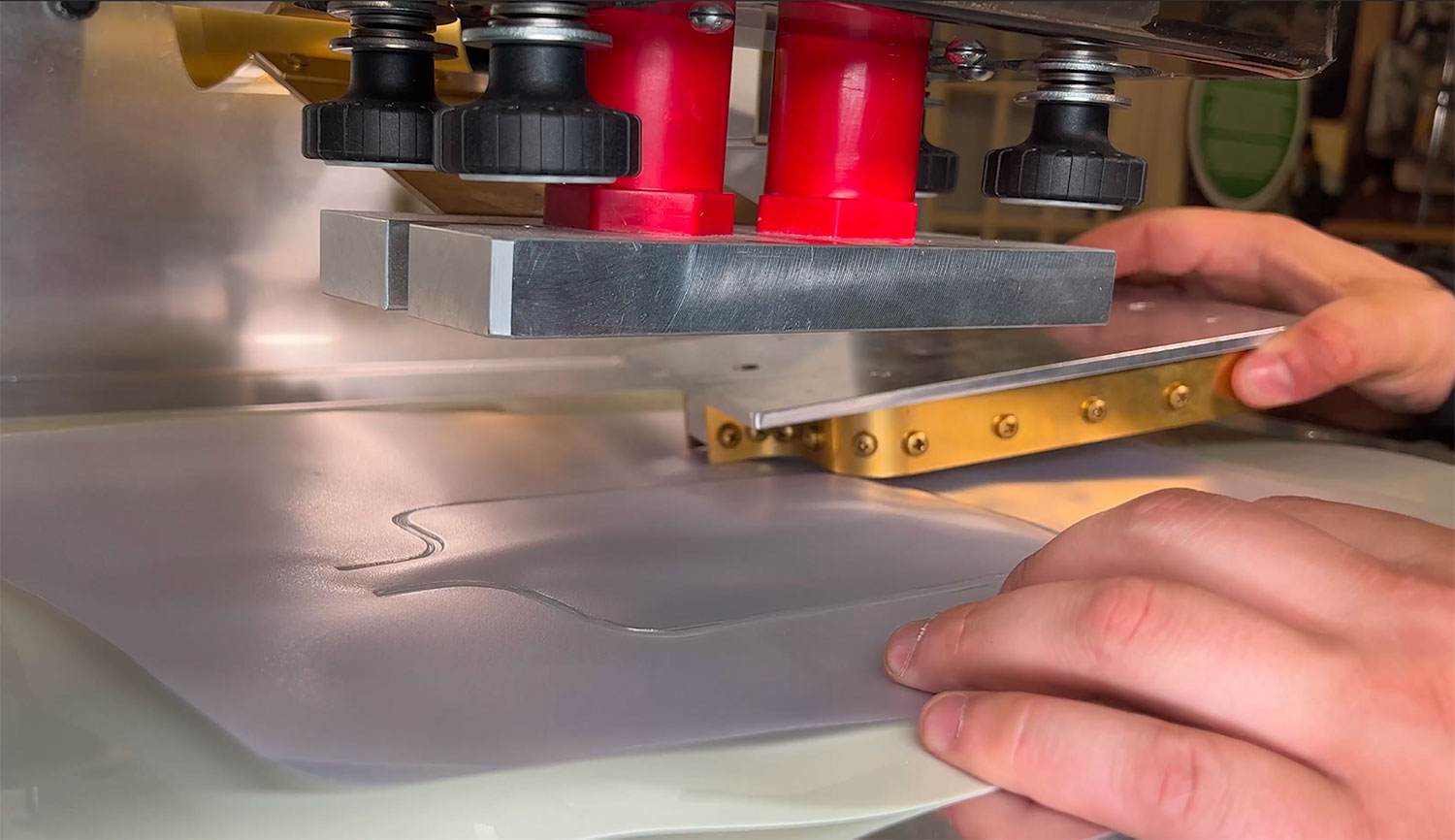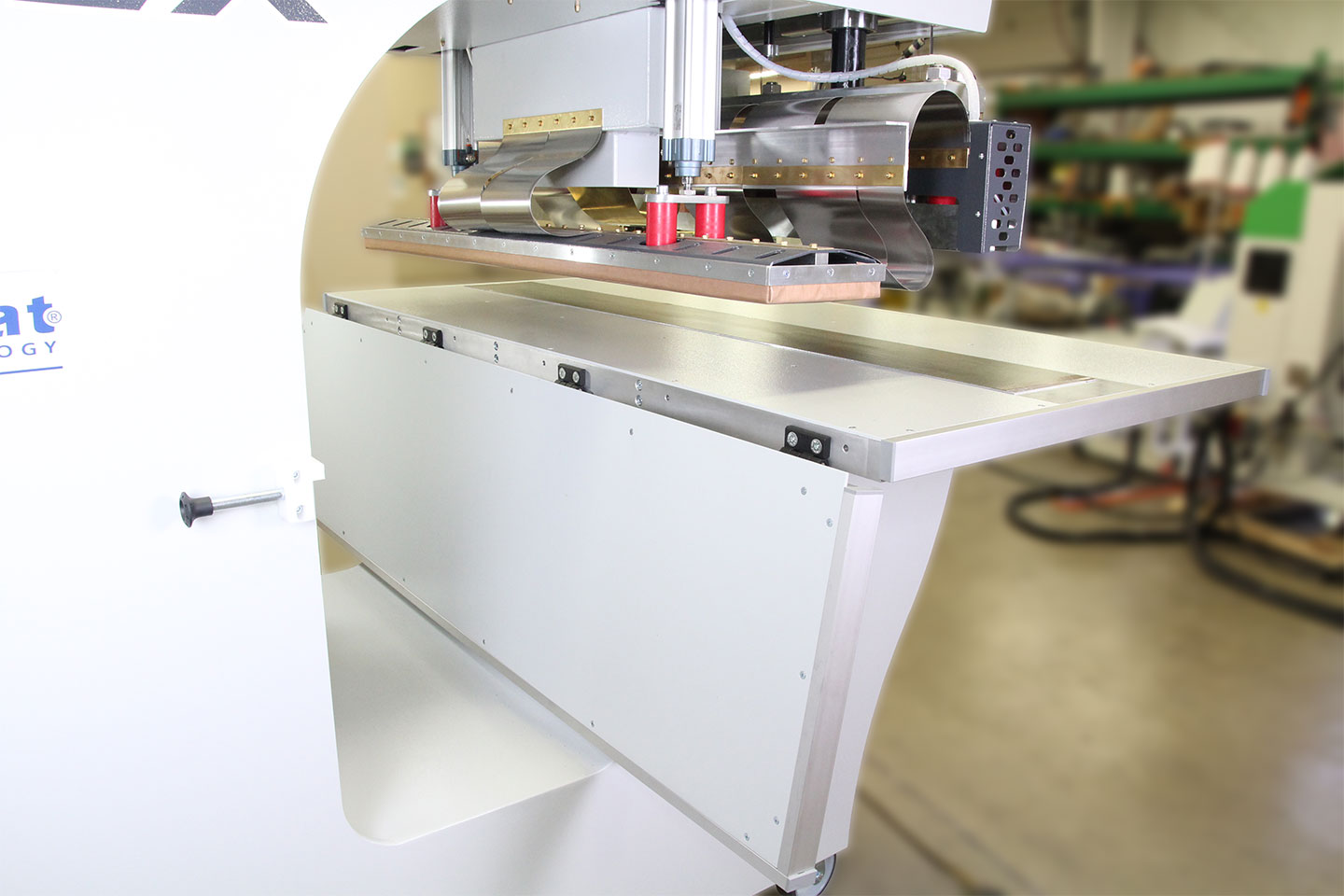How RF Welding Contributes to the Longevity of Flexible Packaging Solutions
Flexible packaging has become an essential component of modern industrial and consumer applications. From food and beverages to medical supplies, the demand for reliable and durable packaging continues to grow. One of the most critical factors in achieving flexible packaging durability is the technology used to seal and bond the materials. RF welding for flexible packaging has emerged as a game-changer, offering unmatched strength, consistency, and longevity in packaging solutions.
To understand how RF welding elevates flexible packaging, let’s explore the science behind it and its applications across industries. Learn more about RF technology and its benefits on our Radio Frequency Welding Technology page.
Understanding the Unique Role of RF Welding in Flexible Packaging
RF welding technology uses high-frequency electromagnetic energy to generate heat and bond thermoplastic materials. This process creates a uniform and durable seal without the need for adhesives or additional materials. It’s an ideal solution for industrial packaging applications where reliability and strength are paramount.
Unlike traditional heat sealing methods, RF welding penetrates the material at a molecular level, ensuring strong bonds and eliminating weak points. This makes it a superior choice for applications requiring airtight, leak-proof, and long-lasting seals.
Achieving Stronger Welds for Long-Lasting Packaging
The strength of a seal plays a significant role in packaging manufacturing longevity. RF welding ensures that seals can withstand daily wear and tear, transportation stresses, and varying environmental conditions. By eliminating weak points, RF welding enhances weld strength in flexible packaging, ensuring products remain secure throughout their lifecycle. This not only preserves product quality but also boosts consumer confidence in the packaging’s reliability.
Creating Airtight and Leak-Proof Packages
Airtight and leak-proof packaging is essential for industries like food, beverages, and pharmaceuticals. RF sealing for packaging provides the precision required to create seamless seals that prevent air and moisture from entering. This level of integrity extends the freshness and shelf life of perishable goods. For instance, liquid products like sauces or beverages benefit significantly from the leak-proof capabilities of RF welding.
How RF Welding Helps Extend Product Shelf Life
The direct correlation between durable seals and extended shelf life cannot be overstated. RF welding ensures packaging seam integrity, which is critical for maintaining product freshness and preventing contamination. This is particularly important in industries where product quality directly impacts consumer safety and satisfaction.
Preserving Product Freshness with RF Welding
When it comes to food packaging, maintaining freshness is a top priority. RF welding creates strong, durable seals that prevent spoilage, keeping products fresher for longer. This results in reduced waste, higher customer satisfaction, and improved sustainability. For example, vacuum-sealed bags used for coffee or snack foods rely on RF welding to maintain airtight conditions and preserve flavor.
Ensuring Packaging Reliability for Industrial Uses
For heavy-duty industrial products, reliable packaging is crucial. RF welding produces robust seals that protect sensitive items during transportation and storage. Whether it’s bulk chemicals, powders, or heavy materials, the durability of RF-welded packaging reduces the risk of product failure, saving industries significant costs.
Comparing RF Welding with Other Packaging Methods for Flexible Packaging
While there are various methods to seal flexible packaging, RF welding stands out for its efficiency, strength, and adaptability. Comparing RF welding to other techniques such as heat sealing and adhesive bonding highlights its advantages.
RF Welding vs Heat Sealing: Which is Better?
Heat sealing and RF welding are both effective methods for flexible packaging, each delivering reliable results. The key difference lies in the process and user preference. While heat sealing uses direct heat and pressure to bond materials, RF welding bonds materials at a molecular level, often providing added durability and precision. Both methods can achieve strong, consistent seals, but RF welding is often preferred for high-volume production due to its efficiency. Ultimately, the choice between the two depends on your specific application and production needs.
Comparing RF Welding and Adhesive Bonding
Adhesive bonding, while effective in some scenarios, has limitations such as chemical usage and environmental impact. RF welding offers a cleaner, more sustainable solution by eliminating the need for adhesives. The result is a stronger, more reliable seal that reduces the risks associated with adhesive failure.

RF Welding Applications for Flexible Packaging Across Various Industries
RF welding’s versatility makes it suitable for a wide range of industries. From food and beverages to medical and industrial applications, this technology adapts to various packaging needs, ensuring high performance and reliability.
Food and Beverage Packaging Applications
In the food and beverage industry, airtight packaging is essential for preventing spoilage and extending shelf life. RF welding creates seals that protect against air, moisture, and contaminants. Products like pre-packaged meals, sauces, and drinks benefit from the durability and precision of RF-welded packaging, enhancing consumer trust.
Medical and Pharmaceutical Packaging Uses
The medical and pharmaceutical industries demand sterile and reliable packaging to ensure product safety. RF welding is the preferred method for creating packaging that meets strict regulatory standards. From IV bags to blister packs, RF welding ensures packaging seam integrity, protecting sensitive medical supplies and pharmaceuticals.
Why Miller Weldmaster is the Right Partner for RF Welding Solutions
With decades of experience, a commitment to innovation, and a global support network, Miller Weldmaster is a leader in providing RF welding solutions. As a trusted local partner with support teams around the world, we deliver custom solutions tailored to your unique packaging needs, ensuring reliable performance wherever you are.
Custom RF Welding Solutions Tailored to Your Needs
Miller Weldmaster collaborates closely with clients to develop RF welding systems that meet specific requirements. Whether you’re sealing complex shapes or working with unique materials, our team ensures optimal results. By choosing Miller Weldmaster, you’re partnering with a company dedicated to enhancing packaging manufacturing longevity and delivering superior performance.
RF welding is revolutionizing the flexible packaging industry, offering unmatched durability, strength, and reliability. From creating airtight seals to extending product shelf life, this technology is essential for industries demanding high-quality packaging solutions. By partnering with Miller Weldmaster, you gain access to cutting-edge RF welding technology and a team committed to your success. Explore how RF welding can transform your packaging processes by visiting our Radio Frequency Welding Technology page.
Frequently Asked Questions About RF Welding for Flexible Packaging
What is RF welding, and how does it work?
RF welding, or radio frequency welding, is a technology that uses high-frequency electromagnetic energy to generate heat and bond thermoplastic materials. This process creates a uniform, durable seal without the need for adhesives or additional materials. RF welding is particularly valued in flexible packaging because it ensures strong, reliable seals that enhance packaging seam integrity and durability.
Here's how it works: the high-frequency energy causes the molecules within the thermoplastic materials to oscillate, generating heat internally. This heat softens the materials at the molecular level, allowing them to bond seamlessly when pressure is applied. Once the energy is turned off, the material cools and solidifies, forming a consistent, airtight, and leak-proof seal.
RF welding excels in applications where strength and reliability are critical, such as industrial packaging applications, food and beverage containers, and medical packaging. Its ability to penetrate materials deeply ensures weld strength in flexible packaging, creating seals that can withstand daily wear, transportation stresses, and environmental conditions.
To learn more about RF welding and its benefits for flexible packaging, visit our Radio Frequency Welding Technology page.
How does RF welding improve the durability of flexible packaging?
RF welding significantly enhances the durability of flexible packaging by creating strong, consistent, and reliable seals. The process works at a molecular level, bonding thermoplastic materials using high-frequency electromagnetic energy. This eliminates weak points commonly associated with traditional sealing methods, such as adhesives or heat sealing, and ensures uniformity throughout the entire seal.
The resulting weld strength in flexible packaging allows it to withstand wear and tear, transportation stress, and environmental fluctuations. For industries that rely on industrial packaging applications, such as food, beverage, or pharmaceuticals, this durability ensures that the packaging protects its contents effectively over time. Additionally, RF sealing for packaging creates airtight and leak-proof seals, preventing contamination, spoilage, or moisture ingress.
By improving packaging seam integrity, RF welding also supports packaging manufacturing longevity. Products remain secure and intact during their lifecycle, whether in transit, storage, or on retail shelves. This level of durability not only preserves the quality of the goods inside but also builds consumer trust in the reliability of the packaging.
For more information on how RF welding enhances flexible packaging, visit our Radio Frequency Welding Technology page.
Is RF welding suitable for all types of flexible packaging materials?
RF welding is highly effective for many types of flexible packaging materials, but its suitability depends on the material's chemical composition. Specifically, RF welding works best with thermoplastics such as polyvinyl chloride (PVC) and polyurethane (PU), which respond to high-frequency electromagnetic energy by softening and bonding at a molecular level.
However, not all flexible packaging materials are RF-weldable. For example, materials like polyethylene (PE) and polypropylene (PP), which are commonly used in flexible packaging, are less responsive to RF welding without special formulations or additives. For these materials, alternative sealing methods, such as heat sealing, are often used.
That said, advancements in RF welding technology and material science are expanding its applicability. Some manufacturers are developing specialized materials and equipment to make RF welding viable for a broader range of industrial packaging applications.
If you’re unsure whether your packaging material is suitable for RF welding, partnering with experts like Miller Weldmaster can help. Their knowledge in custom packaging solutions ensures you receive guidance on the best sealing method for your specific material and application.
What industries benefit the most from RF-welded flexible packaging?
RF-welded flexible packaging offers durability, reliability, and adaptability, making it an ideal choice for a wide range of industries. The industries that benefit the most include:
1. Food and Beverage
The food and beverage industry relies heavily on airtight and leak-proof packaging to maintain product freshness and prevent contamination. RF welding ensures packaging seam integrity, keeping air, moisture, and contaminants out. Products such as pre-packaged meals, vacuum-sealed snacks, and liquid items like sauces and beverages greatly benefit from the strong, airtight seals provided by RF welding, which helps extend shelf life and reduce spoilage.
2. Medical and Pharmaceutical
For medical and pharmaceutical applications, packaging integrity is critical to ensure sterility and safety. RF welding creates highly durable seals for products like IV bags, blister packs, and sterile equipment pouches, meeting the strict regulatory standards of these industries. Its precision ensures flexible packaging durability to protect sensitive products from contamination and damage during storage and transportation.
3. Industrial and Heavy-Duty Applications
Industries that package bulk materials such as chemicals, powders, or construction supplies benefit from RF welding’s ability to create robust, long-lasting seals. These industrial packaging applications demand packaging that can withstand rough handling, environmental exposure, and heavy loads during transport. RF welding delivers the strength and reliability needed for these demanding environments.
4. Electronics
The electronics industry uses RF-welded packaging to protect sensitive components from dust, moisture, and static. RF welding’s precision ensures secure seals for packaging items like cables, circuit boards, and other delicate equipment.
5. Consumer Goods
For consumer products such as cosmetics, personal care items, and household goods, RF welding provides durable, visually appealing packaging. Its ability to create uniform seals enhances packaging design while ensuring product safety and longevity.
RF welding’s versatility makes it suitable for a wide range of custom packaging solutions, allowing manufacturers across these industries to meet their specific needs while ensuring product protection and quality.
How does RF welding compare to other sealing methods?
RF welding stands out from other sealing methods, such as heat sealing and adhesive bonding, due to its superior strength, precision, and reliability. Here's how it compares:
1. RF Welding vs. Heat Sealing
- Strength and Durability: RF welding creates seals at a molecular level, resulting in consistent, uniform bonds that are stronger and more durable than those achieved with traditional heat sealing. This makes RF welding ideal for applications requiring high weld strength in flexible packaging.
- Precision: Unlike heat sealing, which relies on external heat application, RF welding uses high-frequency electromagnetic energy to generate heat within the material itself. This ensures a more precise seal without the risk of overheating or material distortion.
- Airtight and Leak-Proof Seals: RF welding excels at creating airtight and leak-proof seals, which are essential for industrial packaging applications, as well as food and medical packaging. Heat sealing can sometimes leave weak points or inconsistencies, especially in high-volume production.
2. RF Welding vs. Adhesive Bonding
- Clean and Sustainable: RF welding eliminates the need for adhesives, which often involve chemicals and solvents that can be harmful to the environment. This makes RF welding a cleaner and more eco-friendly option for custom packaging solutions.
- Reliability: Adhesive bonding can weaken over time or fail under certain environmental conditions, such as exposure to moisture or high temperatures. RF welding, on the other hand, ensures durable bonds that maintain packaging seam integrity regardless of external conditions.
- Cost-Effectiveness: While adhesive bonding may seem cost-effective initially, the long-term reliability and reduced material costs of RF welding make it a more economical choice for large-scale production.
3. RF Welding vs. Ultrasonic Sealing
- Material Compatibility: RF welding is particularly effective with thermoplastic materials like PVC and polyurethane, whereas ultrasonic sealing may struggle with certain materials.
- Seal Strength: RF welding often provides stronger and more uniform seals compared to ultrasonic methods, making it more suitable for heavy-duty or high-pressure packaging applications.
- Production Efficiency: RF welding is better suited for sealing complex shapes and larger packaging designs, giving it an advantage in certain industrial and commercial applications.
Why RF Welding Stands Out
Compared to these methods, RF welding offers unmatched flexible packaging durability, making it the preferred choice for industries requiring high-performance packaging. Its ability to create reliable, strong, and sustainable seals ensures packaging manufacturing longevity, making it a cost-effective and efficient solution for modern production needs.





.png)